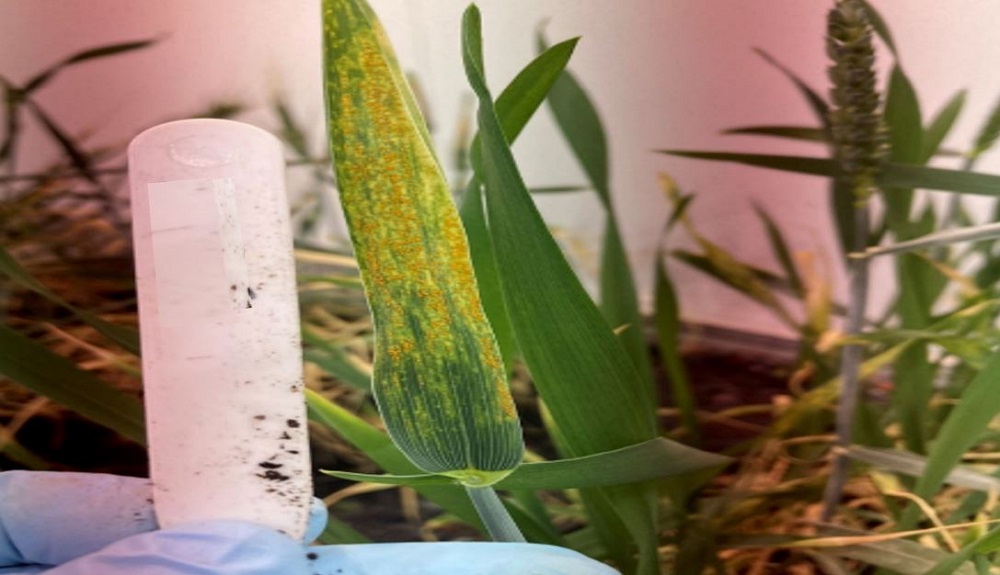Speeding up cereal disease surveillance
Thursday, 18 May 2023
Established nearly 60 years ago, the UK Cereal Pathogen Virulence Survey (UKCPVS) is a constant force in the volatile foliar-disease landscape. Jason Pole, who manages technical communications at AHDB, explains how the project is exploring ways to get disease data out quicker.
Strategic value of UKCPVS
UKCPVS is a long-term strategic project. Set up in 1967, UKCPVS started to:
- Monitor cereal pathogen populations
- Invest in cereal pathology skills (honed towards the needs of UK farmers and plant breeders)
- Curate an expanding database of the UK’s cereal pathogen isolates (used to inoculate variety trials)
- Maintain seed stocks of varietal lines (used to classify the pathotypes of cereal diseases in UK crops)
Collectively, the resource is exploited to help understand pathogen population changes, including those seen in the last decade in the wheat yellow rust population and, more recently, the wheat brown rust and stem rust populations (the latter at no cost to AHDB).
Despite its strategic value, a criticism levelled at the project is that its work is ‘behind the curve’.
UKCPVS uses diseased leaf samples from commercial crops. So, just like Recommended Lists (RL) disease ratings, information gleaned from such crops will always reflect what has happened, not what will happen.
However, this doesn’t mean things can’t get faster.
Young plant resistance
First introduced for the current (2023/24) edition, the RL features young plant resistance (r) and susceptibility (s) data for yellow rust in winter wheat.
In the autumn, a carefully selected isolate subset is screened on young plants of all RL and candidate varieties in growth rooms by UKCPVS.
The results, combined with RL trial data, allow the publication of young plant resistance data before disease takes hold (and in time for the T0 spray window).
The story for the adult plant stage is not so simple.
UKCPVS does comment on unusual findings emerging during adult plant field trials and how observations align with commercial crops.
Certainly, this brings UKCPVS in line with the curve. But can it get ahead of it? Potentially.
Growth room research
Growth rooms are invaluable for testing young plants. But could controlled environments help fast-track adult plant stage tests out of season?
To test the approach, the team grew 15 varieties (with a wide range of resistance ratings) under extended daylength conditions in 2022.
As rust does not develop well under extended daylengths, plants were moved to optimum conditions for the disease after inoculation (the team used two yellow rust isolates collected in the 2021 season).
Although strong yellow rust symptoms were observed (see image), disease levels did not align well with those observed in standard adult plant field trials (also conducted in 2022).
It was a disappointing result.
It is also a relatively expensive procedure – with relatively high labour, capital (growth room) and energy costs.
It appears that the approach is a no-goer.
Pathogenomics
The capacity for a yellow rust isolate to cause disease on a variety is coded in its DNA.
With full knowledge of all genes involved in successful infection, it is possible, in theory, to predict what the season has in store for crops (excluding new-race curveballs blown in on the wind).
However, major knowledge gaps mean that full genomic solutions are many years away, despite rapid progress in research.
Researchers at the John Innes Centre (JIC) pioneered the use of the ‘MARPLE’ (Mobile and Real-time PLant disEase) molecular diagnostic approach that can identify fungal strains in a sample.
For the past four years, the UKCPVS team has used and improved the technology to screen isolates for the presence of 320 yellow rust genes.
They use the genotype data to build a family (phylogenetic) tree.
The technique can detect if something is genetically distinct, speeding up the confirmation of new races.
At present, it is unable to reveal the implications to specific varieties.
However, investment in such techniques could eventually lead to a powerful real-time surveillance system to help monitor the presence and abundance of yellow rust strains across the season.
Phenotyping
While the world waits for genomics to provide, nothing beats testing isolate-variety interactions.
Another AHDB-funded, NIAB-led study – called ‘Yellowhammer’ – is investigating ‘microphenotyping’.
It is a fascinating approach that uses high-power microscopes to reveal the growth stages of yellow rust.
The technique can capture the earliest infection symptoms and detect the stage at which growth is arrested by any host-defence mechanism.
Microphenotyping has the potential to revolutionise disease monitoring and plant breeding.
Submit a sample to UKCPVS
The potential power of emerging disease monitoring approaches is significant, and they are already making a difference.
However, patience is required. Good things often take time.
If you are itching to make a difference today, why not submit a diseased leaf sample to UKCPVS?
With focus in 2023 on yellow rust and brown rust, it is the peak period for sampling.
 NIAB
NIAB


